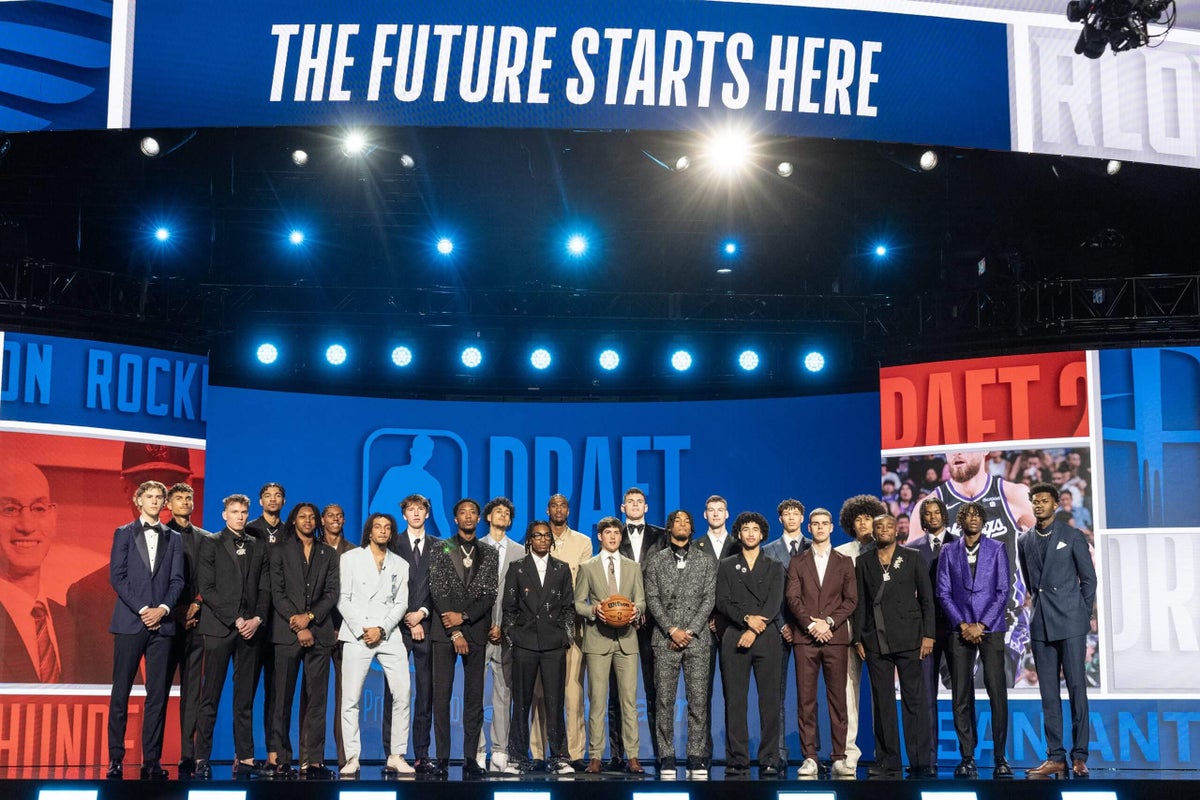
Cooper Flagg, Dylan Harper and Ace Bailey are coming to the NBA next season, but the list of underclassmen who are testing the waters of the NBA Draft isn’t as long as it used to be.
The NBA announced on Tuesday that 106 players had declared early for the 2025 draft. That’s the fewest since 2015, when 91 players declared early, and continues a half-decade trend of players increasingly choosing to stay in college rather than go pro.
Advertisement
The huge dip can be attributed to several factors. The NCAA changed its rules in 2016 to allow players to go through the draft process without losing their college eligibility and pushed back the day they had to decide whether to stay in the draft. In 2016, 162 players declared early for the draft, and the number mostly climbed from there.
The pandemic brought a new factor into the mix. Players whose seasons were affected by the pandemic were granted an extra year of eligibility starting in 2021, which allowed them to stay in college longer but also to keep testing the draft process. A record-high 353 players declared early for the 2021 draft, including 161 seniors (just 11 seniors declared early this cycle).
That number has declined ever since. On July 1, 2021, the NCAA finally allowed players to make money off their name, image and likeness (NIL), which opened up a pathway to get paid while still in school.
As fewer players declare for the draft early, the proportion of those who do has become younger over the last three years. In 2023, about 12 percent of the early entrants were freshmen; this year, it’s 22.6 percent. Underclassmen made up 21 percent of the early entrants in the 2023 draft and make up 34.9 percent of the early-declare class this year.
It is the clearest reflection that there is plenty of money to be made in college basketball, and many players have now decided to stay there instead of testing the waters through the draft process. Next year, about 10 schools will pay their rosters somewhere around $10 million, according to CBS Sports, and the salaries for top players are reaching several million dollars per season.
Increasingly, they can make more money playing college basketball than they would if they were a second-round pick — where signing a deal on a second-round pick exception this summer could mean as little as $1.27 million in the first year of that contract. A two-way deal pays half that. Even if the NBA wanted to entice players to pass on their remaining college years, the salary structures for rookies can’t be changed until a new collective bargaining agreement is implemented, which wouldn’t be until 2029 at the earliest.
Advertisement
Some players enter the draft as a way to gain leverage in NIL contract talks and get more money to return to school. The elite players can even make more than a late first-round pick. The No. 28 pick in the 2025 NBA Draft is set to make $2.8 million next season based on the NBA’s rookie scale. Robert Wright III just left Baylor for BYU to make a reported $3 million next season. J.T. Toppin is reportedly getting $4 million to return to Texas Tech.
Then there are the international players. Increasingly, they also are not entering the draft early. This year, 27 international players declared early. That’s the fewest since 2012, when just 17 players went into the draft as early entrants. That number hadn’t dipped below 30 in the years since.
International players are flocking to the U.S. to make money at American colleges and no longer have to decide whether to go pro or go to a U.S. school. The number of international players at Division I men’s basketball programs has more than doubled since the 2009-10 season, according to NCAA statistics, and the majority of them are from Europe — a 13 percent increase since the 2021-22 season, according to FIBA.
They are leaving top European teams and developmental systems to go to college basketball. Last season, BYU signed Egor Demin from Real Madrid. Kasparas Jakučionis, a potential lottery pick this year, spent one year at Illinois after he left FC Barcelona. Next season, the Illini are building through the Balkans.
That affects the NBA, of course. If fewer players enter the draft each year, that could make each draft class less deep, which impacts the bottom of the first round and the second round. There is already some grumbling that the G League has been hollowed out by the creation of a third two-way spot, and that was during a period when more talent was reaching the league. Additionally, the NBA will start receiving older prospects, especially later in the draft, as players exhaust their college eligibility to maximize their earnings.
Advertisement
Of course, this is only a starting point. Every player who declared early has until June 15 to decide if he wants to stay in the draft. The NCAA has its own withdrawal deadline of May 28 for players who wish to retain their college eligibility. By then, we’ll know who’s staying in college and who is ready to leave.
(Photo of the 2024 NBA Draft: Lev Radin / Anadolu via Getty Images)
